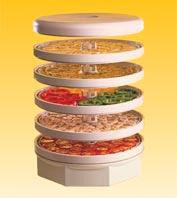- Mowed around potato farm (tyres) and garden plots. Very wet!!!
- Fed Snails (lettuce)... all feed eaten
- Fed Silver Perch (SP pellets) and Yabbies (lettuce)
- Checked Sump, Bio Filters, Tanks and Pumps
Check
_aquaculture_
twitter
Agricultural Technology @ Wadalba Community School, NSW, Australia
Check
_aquaculture_
twitter

 Bunnings... is NOT just a place to buy a sausage sandwich on a Saturday! Got a heap of catalogues and... after a bit of a wonder bought replacement rake, 'the claw', broom and spade handles. Found it was cheaper to buy some mops (with handles) for $2.50 than a handle for $8.59.
Bunnings... is NOT just a place to buy a sausage sandwich on a Saturday! Got a heap of catalogues and... after a bit of a wonder bought replacement rake, 'the claw', broom and spade handles. Found it was cheaper to buy some mops (with handles) for $2.50 than a handle for $8.59.


 A Data Logger is an electrical device, usually battery powered, used to record information on temperature, salinity, dissolved oxygen, and pH ...etc. Data loggers can be used for Land, Sea, and Air, SPACE and in any other application where the collection of data is required
A Data Logger is an electrical device, usually battery powered, used to record information on temperature, salinity, dissolved oxygen, and pH ...etc. Data loggers can be used for Land, Sea, and Air, SPACE and in any other application where the collection of data is required We Made It!
We Made It!Table
Food Natural Weight Dehydrated Weight Percentage of Water/Moisture
Banana
Orange
Basil
Apple
Capsicum
Pineapple

Drying is a method of food preservation that works by removing water from the food, which prevents the growth of microorganisms and decay. Drying food using the sun and wind to prevent spoilage has been known since ancient times. Water is usually removed by evaporation (air drying, sun drying, smoking or wind drying) but, in the case of freeze-drying, food is first frozen and then water is removed by sublimation.
Bacteria and micro-organisms within the food and from the air need the water in the food to grow. Drying effectively prevents them from surviving in the food. It also creates a hard outer-layer, helping to stop micro-organisms from entering the food.
Develop an experiment to:
1. Determine how much water is removed during the dehydration process?compare, contrast tastes of original and dehydrated foods
2. Do dehydrated foods taste differently to non-dehydrated foods?
3. What foods can be dehydrated?
4. Bacteria: how do we know if a food product has been effected? What are the consequences of eating food infected with bacteria
5. Do hydrated foods 'lasts' longer than non-dehydrated foods?
Students Learn to:
* Demonstrates safe practices in the use of equipment, materials and tools
* Maintains and cares for equipment, materials and tools